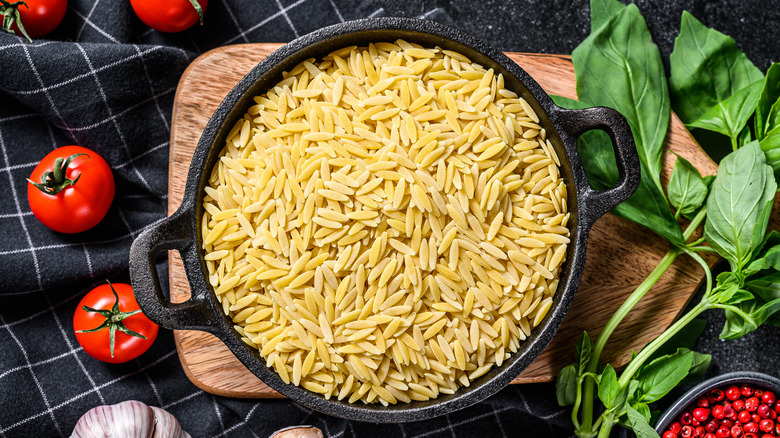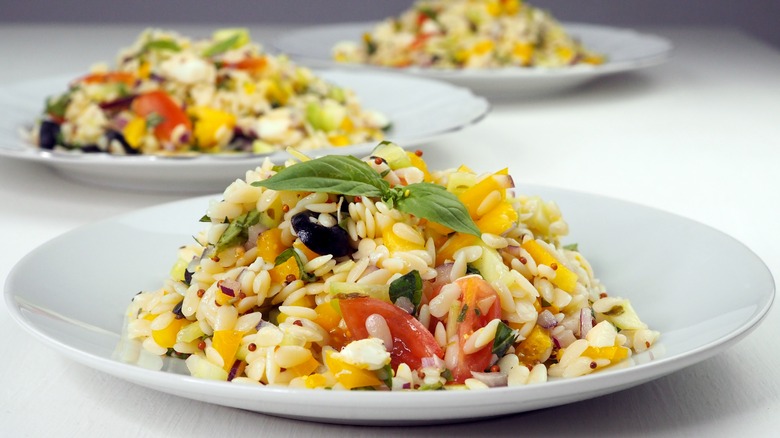Cook Orzo Just Like Any Other Pasta For The Most Al Dente Bite
Tiny rice-shaped orzo might look like a grain, but it's actually a very small version of pasta. That's great news for weeknight cooking because pasta cooks faster than grains do, so you can get dinner on the table in less time. Don't let the shape confuse you, orzo cooks just like any other pasta, in a pot of salted boiling water. The box of orzo will tell you how many minutes you can expect to boil for — usually six to eight — but when you're aiming for a firm al dente bite, be sure to check a few minutes early to make sure you're not overcooking your orzo. Just carefully scoop a few pieces out of the pot and bite them to check the texture.
This small pasta shape is perfect for making Mediterranean pasta salads because the tiny size allows each bite to contain all of the salad ingredients easily. It provides an easy-to-manage pasta in soup, too — no slithering noodles to splash back into the bowl.
Follow a few rules for great al dente orzo
Although perfectly al dente orzo is easy to achieve, there are a few mistakes to avoid when cooking pasta in general. Be sure the water is at a rolling boil, and generously salted before adding your pasta. Salted water helps to season the pasta throughout, making a better-tasting finished recipe. When the pasta is cooked, drain it well in a mesh sieve — your normal colander might have holes big enough for the pasta to slip right through, especially tiny orzo. Finally, toss the cooked orzo with a bit of olive oil or butter to keep it from sticking together in a mass.
It turns out that al dente pasta is not only a great eating texture, not too mushy and not too hard, but it's also better for your digestion. Pasta that's cooked to the al dente stage and not beyond digests more slowly, leading to less dramatic highs and lows in blood sugar after eating.

